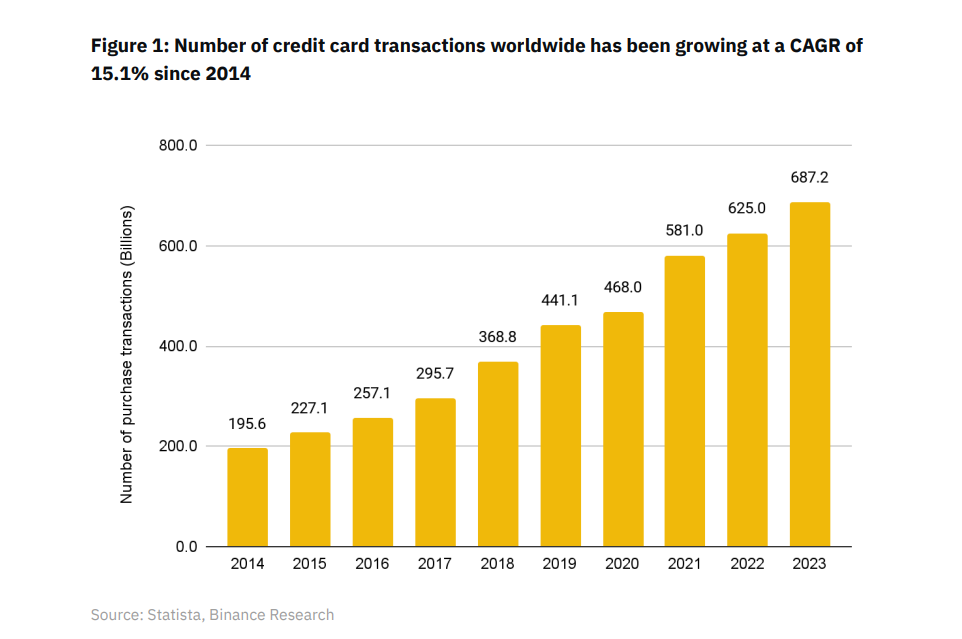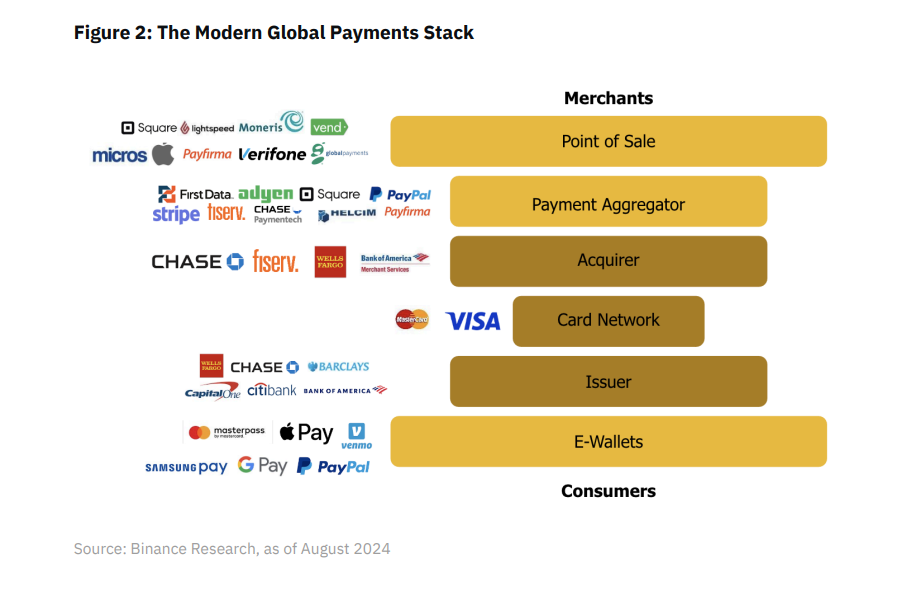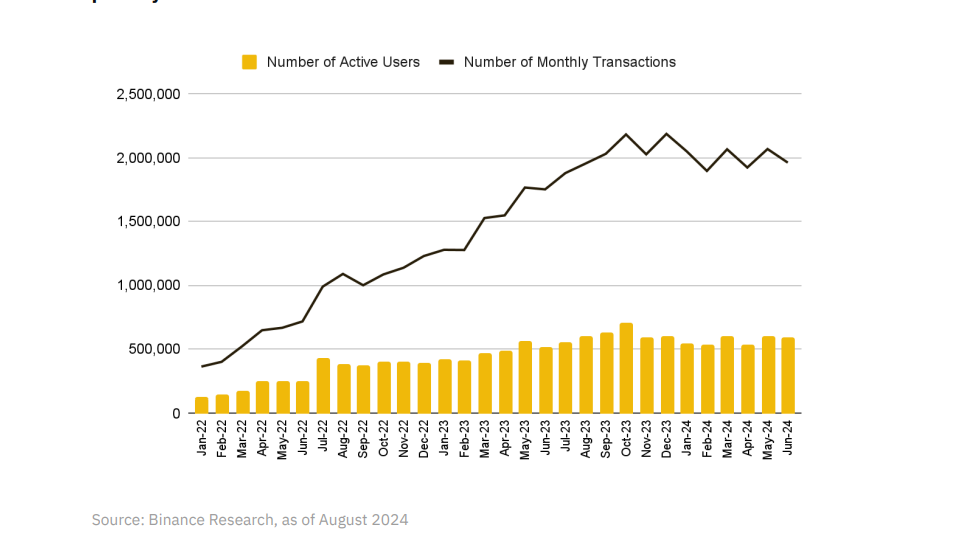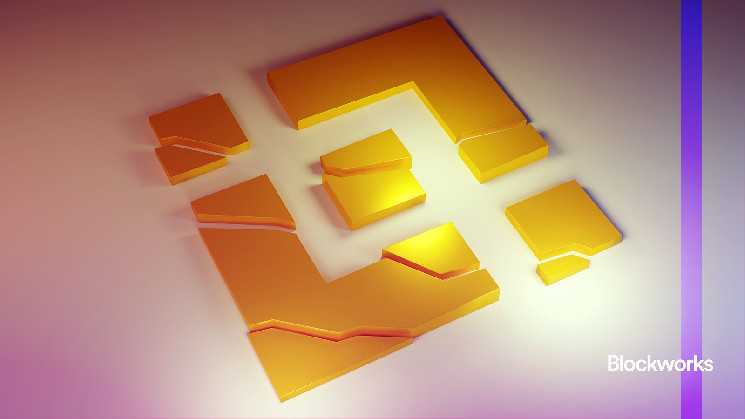Binance Research, the research arm of the crypto exchange Binance, has just published the report “Blockchain payments: a new start“, in which it analyzes the role of blockchain technology in the changing world of digital payments.
The research highlights how blockchain payments are up to 50 times cheaper compared to traditional electronic payments, as well as being significantly more flexible.
Binance Pay, the payment platform of the crypto exchange of the same name, has registered a 71% increase in volume in 2023. This highlights greater user proactivity in making crypto payments compared to previous years, thanks to the development of new Web3 infrastructures.
Let’s delve deeper into the topic below.
The transformative potential of blockchain technology according to Binance: fast and accessible digital transactions
In his latest report “Blockchain payments: a new start“Binance Research explores the innovative role of blockchain technology in the digital payments ecosystem.
Currently, the digital transaction sector is proving to be one of the most important in the world, with an estimated turnover of $2.83 trillion by 2024.
This is an industry experiencing strong growth, with targets predicting total sales will reach $4.7 trillion by 2029, with a compound annual growth rate (CAGR) of 10.8%.
Much of the value stored by digital payments, as noted by Binance, is monopolized by the use of debit and credit cards worldwide.
Vendors such as American Express, JCB, Mastercard, UnionPay and Visa have led to a continuously growing trend in card transactions over the past 9 years.
Since 2014, the CAGR is 15.1%as shown in the picture.

Despite its growth trajectory, the payments industry is still tied to technological infrastructures that are approximately 50 years old.
The growing landscape of actors involved in managing capital flows has created numerous intermediaries between the merchant and the consumer.
The inefficiency of existing systems to which fintech solutions remain anchored makes the world of payments increasingly inefficient and governed by various fees.
According to Binance’s report, the average cost of sending $200 via traditional methods is about 6%, or $12.70. Instead, transactions using the blockchain stack are fifty times more economical, confirming their disruptive potential.
The implementation of blockchain also significantly reduces the need for fiduciary intermediaries, simplifying the connection between the interested parties.
Not only that, the lack of a traditional banking structure in favor of decentralization also makes this possible payments increasingly accessible, especially in areas of the so-called “without a sofa”.
The same major operators like Visa and Mastercard are also aware of these benefits and are trying to gain a foothold in cryptographic practices.
At the same time, Binance Pay is leading the way in providing users with more efficient and faster solutions for international money transfers.

The various infrastructure stacks of payments on blockchain
Now let’s see what, according to Binance, are the infrastructural solutions that blockchain technology offers in electronic payment processes.
The significant reduction in the number of intermediaries and the associated costs necessarily goes hand in hand with the implementation of a trustless connection between merchant and consumer.
We can distinguish 4 different stacks that exploit the potential of the blockchain in payments: settlement layer, asset issuer, on/off ramp and application interface.
- The settlement level is level 1 of cryptographic networks such as Bitcoin, Ethereum and Solana, which provide the function of selling blockspace for external requests. To this are added the various second-tier solutions, which boomed from 2023 onwards, improving payment speed by relying on smarter infrastructures. We can imagine this level as the blockchain alternative to the network of banks that make up the current payment system.
- The issuer level is represented by organizations responsible for creating, managing and redeeming stable currencycryptocurrencies with a value pegged to a fiat currency. These issuers, as Binance reminds us, often operate with business models based on balance sheets similar to those of banks. They accept deposits from customers and invest in low-yield funds such as US government bonds. They generate profit from the spread or net interest margin.
- There are then the on/off ramp levels that act as a technological bridge for the stablecoin transitioncrypto and fiat banking systems. Their business models are typically driven by capital flows, with a small percentage of total volume earned in dollars. Currently, the on/off ramp level is usually the most expensive part of crypto payments. Popular providers such as Moonpay charge up to 1.5%, while Binance Pay builds up a cheaper level.
- Finally, the last level is that of the application interface, which represents the front-end part shown to the customer to advance encrypted digital payments. Several applications offer simple and intuitive user interfaces that allow less educated users to leverage the potential of the blockchain without knowing the technical details. Their business models may generally include a hybrid model of platform fees and transaction-based fees.
The strong expansion of the Binance Pay platform
In a context of growth for the blockchain payments sector, the Binance Pay payment platform is observing strong adoption of its services.
The eponymous branch of the crypto exchange is seeing an increasing demand for cross-border transactions, which are faster and more convenient thanks to the blockchain.
In particular, in the first half of 2024, Binance Pay recorded a 43% increase in active users compared to the second half of 2023. During the same period, transaction volumes grew by 9%, reflecting strong demand for cryptocurrency-based payments.
A year earlier, the platform had grown by another 71% in terms of volume, also a record of 77 billion dollars.
The stratospheric numbers don’t end here: since 2022, Binance Pay has also significantly increased the number of monthly transactions.
We are talking about an increase of almost five times as many transactions as the previous year, with 13.5 million users worldwide and 1.96 million transactions.
Among the markets where Binance has the most presence we find South Asia, Eastern Europe, the Middle East and North Africa (MENA) and Latin America.

Speaking about the success of Biance Pay, Binance Italy CEO Gianluigi Guida spoke in a press release about the factors that drove such performance.
The expert indicates that the reason for the positive figures can be found in the potential of blockchain technology and the financial revolution that is underway.
“Blockchain technology is revolutionizing the global financial landscape, introducing new levels of efficiency, inclusivity, transparency and accessibility. The increasing adoption by traditional institutions, as evidenced by initiatives by global players, is confirmation of a structural change. Blockchain is not an alternative to traditional financing, but a complement that can integrate and improve existing infrastructures. This scenario represents a new era for the digital economy, with benefits for users and businesses around the world.”

